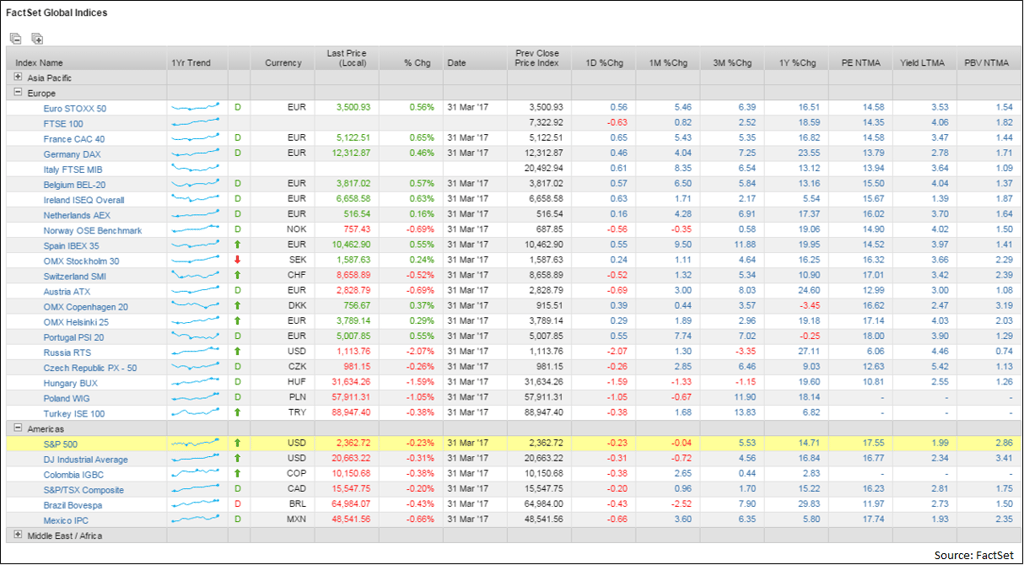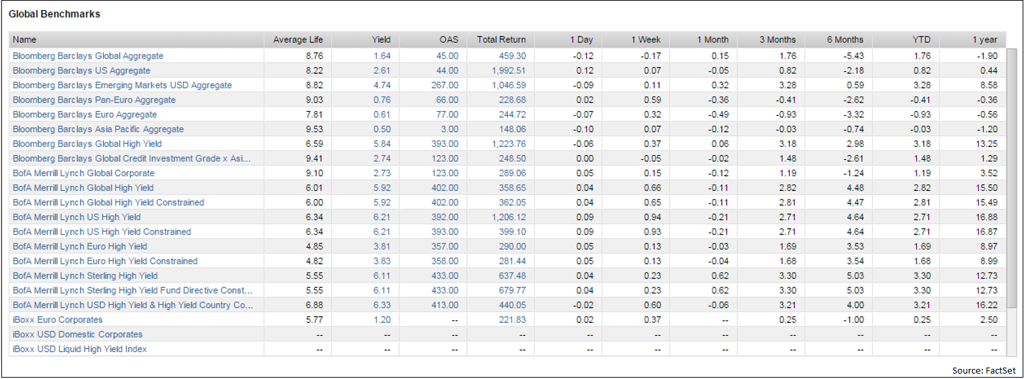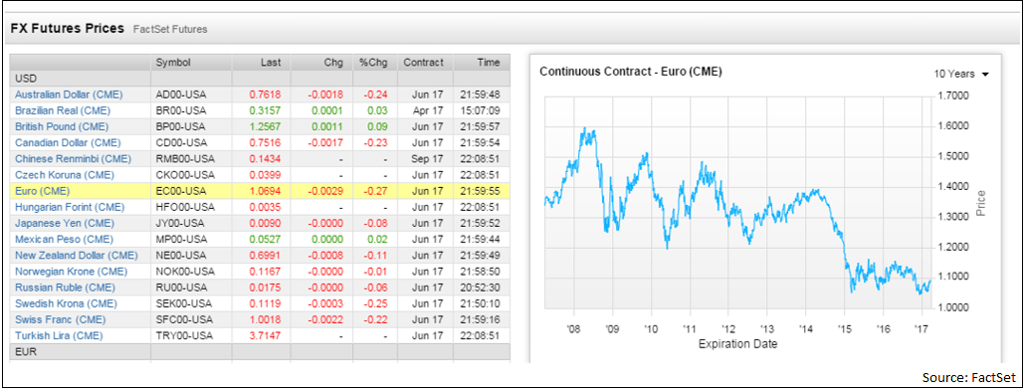Wow, the first quarter sure flew by. It seems like only yesterday that I was discussing risk-reward pitfalls and opportunities across global fixed income markets heading into the New Year. Taking stock after the first quarter, does 2017 look to be a rare vintage for fixed income investors or is it withering on the vine?
In the United States, we have nearly made it through President Trump’s first 100 days. The transition has been anything but calm, but the markets have taken it in stride. Late-March volatility aside, the mindset seems to remain more or less risk-on.


The Federal Reserve raised rates in mid-March and as of quarter end, the 10-year benchmark yield is 2.38%, down nearly 25 basis points from post-election highs. Individual governors maintain a mixture of dovish or hawkish tones, yet the dot plots (the 21st century tea leaves, natch) indicate that we should expect two additional increases this year. Against this backdrop, corporate bond issuance continues to accelerate at narrower spreads. The question that should be on everyone’s mind is, “How sustainable is this environment?”
Regardless of which camp you fall into, “lower for longer” appears to be a real thing as inflation goes wanting. A wait and see approach should be rewarded given roll down, strength of issuance, and assumed reinvestment at higher rates. Relative value analysis across DTS, Yield/Duration (unit of income per unit of interest rate risk), and issuer fundamentals takes pride of place in what amounts to a net positive environment for investors across the belly of the curve.
Outside the U.S.
Jumping across the pond, the UK formalized Brexit proceedings from the EU and the Bank of England (BOE) countered with a rate cut. While the next two years of negotiations will be fascinating to observe, watching the BOE juggle monetary policy, pound volatility, and the importation of inflation will be equally spellbinding. To hedge or not to hedge, that is the question.
Elsewhere in Europe, the political hurricane seen swirling around the North Sea at the beginning of the year has been downgraded to a tropical storm. The Netherlands rejected the populist play of Wilders’ bid, while the French seem to be coalescing around Macron’s more centrist views. While an unknown remains in the outcome of the German election, a decision between the Christian Democrats or Social Democrats seems unlikely to roil markets. Close watch over the ECB, inflation, peripheral spreads, and potential market moves is warranted in a market still prone to political shocks.

We also need to consider emerging markets, with a focus today on China and South Africa. China continues to stabilize, albeit at lower growth rates. Market structures are improving, especially for fixed income investors, as the world’s second largest bond market seeks to attract new players. There is still real risk on the political and economic fronts to be sure, but barring a major shakeup, playing this offshore from Hong Kong can add incremental yield to a portfolio in measured doses.
South Africa meanwhile never fails to excite. Just when it seems like the economy has turned the corner in a strengthening rand environment, the surprise firing of the finance minister caused a new bout of volatility. Only time will tell whether this represents a buying opportunity or a giant warning signal of more trouble to come.
In closing, where are we now? Thus far, 2017 seems to be neither a rare vintage nor a corked bottle. Rather, still in the early days, it is more like a reliable table wine—one that will not shock you positively or negatively, but is still relatively satisfying. Relative value across issuers, structures, and markets is taking pride of place against a so far benign (if very slightly bearish) interest rate environment. Do you have the necessary tools to position your portfolio to capitalize on these opportunities?
